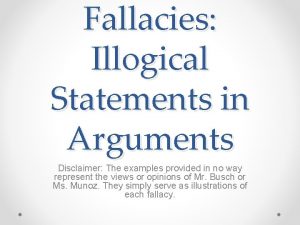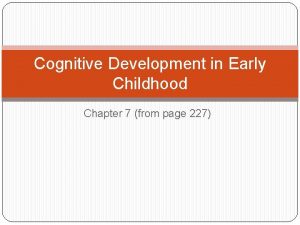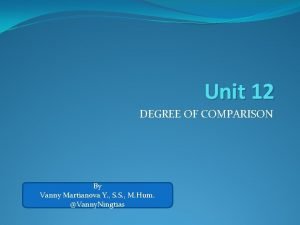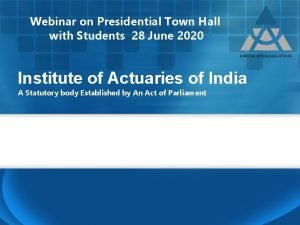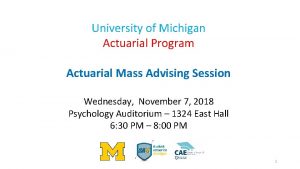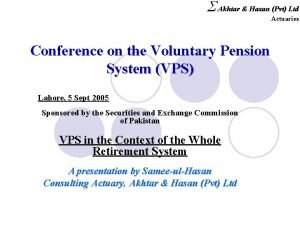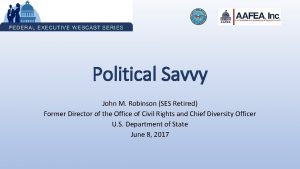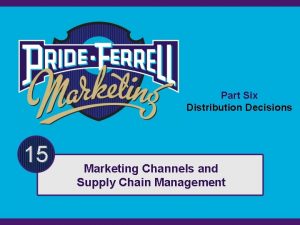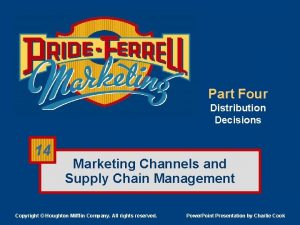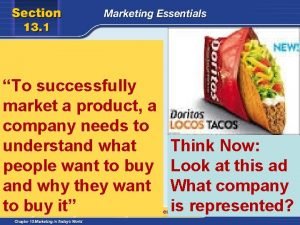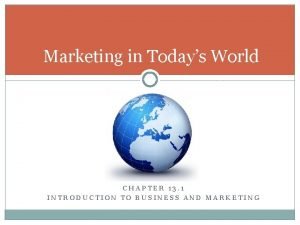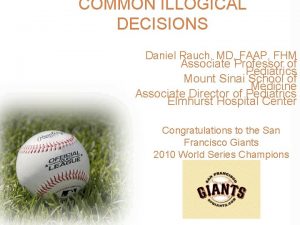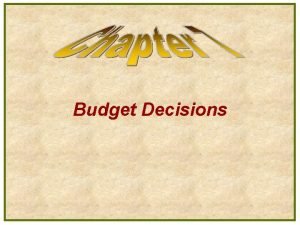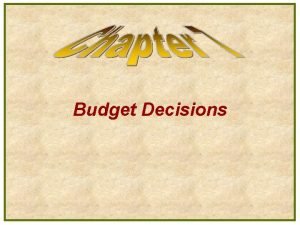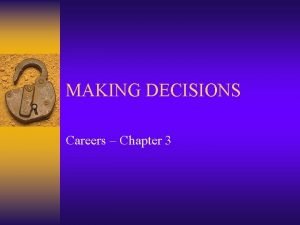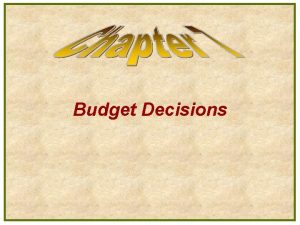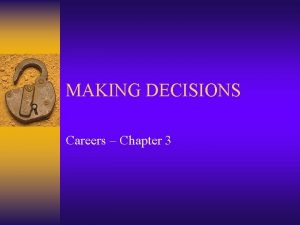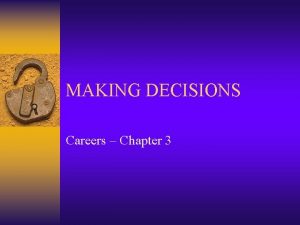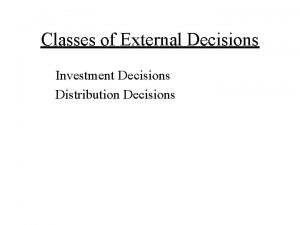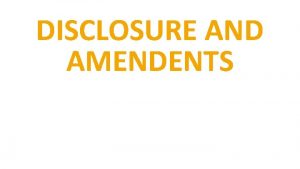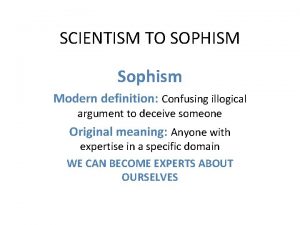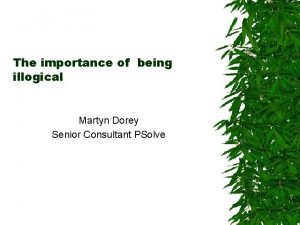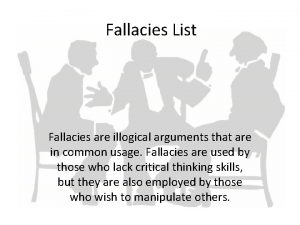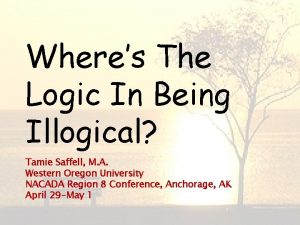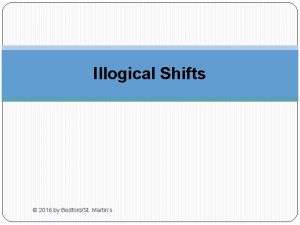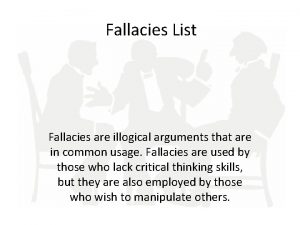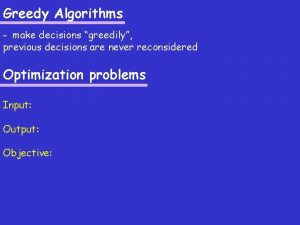Why Do Actuaries Make Illogical Decisions The Actuaries































- Slides: 31

Why Do Actuaries Make Illogical Decisions? The Actuaries ‘ Club of Philadelphia May 10, 2017 David Rains, Guy Carpenter *Material by Rick Leavitt, GC Smith Group GUY CARPENTER │ GC SMITH GROUP

“The idea that the future is unpredictable is undermined every day by the ease with which the past is explained. ” - Daniel Kahneman, Thinking, Fast and Slow GUY CARPENTER │ GC SMITH GROUP 1

Actuarial Science: Ruled by Logic? = Actuary? "Emotions are alien to me. I'm a scientist. " -- Spock, This Side Of Paradise "Without facts, the decision cannot be made logically. You must rely on your human intuition. " -- Spock, Assignment: Earth “Nowhere am I so desperately needed as among a shipload of illogical humans. ” -- Spock, I, Mudd 2 GUY CARPENTER │ GC SMITH GROUP

GUY CARPENTER │ GC SMITH GROUP February 15, 2022 3

Evaluating Underwriting Offices What can we learn from experience? What is the chance that Office A was just unlucky? This depends on what question you are asking? GUY CARPENTER │ GC SMITH GROUP 4

Evaluating Underwriting Offices What is the chance of a 107% A/E Loss given an expectation of 101%? < 0. 5% If the expectations are equal, what is the chance that Office A will have 6% worse experience that Office B? ~ 15% Given that Office A experience is 6% worse than office B, what is the chance that Office A has a risk expectation better than Office B? GUY CARPENTER │ GC SMITH GROUP 1. 5% - 8% 5

Evaluating Underwriting Offices But wait…. Do we really understand the risk dynamics? Office A is 6% worse than Office B in total, but better than office B for BOTH case-size groups GUY CARPENTER │ GC SMITH GROUP 6

Evaluating Underwriting Offices Simpson Paradox: first identified in 1906 “… is a paradox in probability and statistics, in which a trend that appears in different groups of data but disappears or reverses when these groups are combined. ” Wikipedia What is going on? Case-size appears to be a significant driver of risk, and Office A tends to handle more larger groups, leading to worse than expected loss. 7 GUY CARPENTER │ GC SMITH GROUP

Evaluating Underwriting Offices What is the chance that the insurance analyst would conclude that Office A has worse performance than Office B? Unknown… GUY CARPENTER │ GC SMITH GROUP 8

Cognitive Bias Tversky, A. , & Kahneman, D. (1974). "Judgement under uncertainty: Heuristics and biases. ". Sciences 185 (4157): 1124– 1131 Daniel Kahneman awarded the Nobel Prize in economics in 2002 Daniel Ariely: “Predictably Irrational: The Hidden Forces That Shape Our Decisions. ” , 2008 Daniel Kahneman, “Thinking Fast and Slow”, 2011. . . At least 10 other related books published since 2008 GUY CARPENTER │ GC SMITH GROUP 9

Cognitive Bias A cognitive bias refers to a systematic pattern of deviation from norm or rationality in judgment, whereby inferences about other people and situations may be drawn in an illogical fashion. Individuals create their own "subjective social reality" from their perception of the input. https: //en. wikipedia. org/wiki/Cognitive_bias GUY CARPENTER │ GC SMITH GROUP 10

Cognitive Bias https: //en. wikipedia. org/wiki/List_of_cognitive_biases GUY CARPENTER │ GC SMITH GROUP 11

Confirmation Bias Confirmation bias is the tendency to search for, interpret, favor, and recall information in a way that confirms one's beliefs or hypotheses while giving disproportionately less attention to information that contradicts it. It is a type of cognitive bias, and a systematic error of inductive reasoning. Mechanisms in statistical analysis 1. Data Selection 2. Scrubbing or data clean-up 3. Stopping Bias 4. One-sided testing GUY CARPENTER │ GC SMITH GROUP 12

Confirmation Biases One-sided Testing Rule: A vowel must have an odd number on the other side Question: which cards should be turned over to verify the rule? A GUY CARPENTER │ GC SMITH GROUP B 2 3 13

Bandwagon Effect: Group Think, Herd Mentality GUY CARPENTER │ GC SMITH GROUP 14

Bandwagon Effect: Group Think, Herd Mentality Which line segment does this segment match? GUY CARPENTER │ GC SMITH GROUP 15

GUY CARPENTER │ GC SMITH GROUP February 15, 2022 16

Cognitive Biases 1. Jack is looking at Anne, but Anne is looking at George. Jack is married, but George is not. Is a married person looking at an unmarried person? a) Yes b) No c) Cannot be determined GUY CARPENTER │ GC SMITH GROUP 17

Are you a Cognitive Miser? Jack: Married Anne: Unknown George: Unmarried Anne is unmarried: Jack is looking at her: Answer: True Anne is married: She is looking at George Answer: True Cognitive Miserliness: People tend to use as little information as possible to make a decision GUY CARPENTER │ GC SMITH GROUP 18

Are you a Cognitive Miser? A baseball and bat cost $1. 10. The bat costs $1 more than the ball. How much does the ball cost? It takes 5 machines 5 weeks to make 5 widgets. How long does it take 100 machines to make 100 widgets? In a lake there is a patch of lily pads. Every day the patch doubles in size. If it takes 48 days to entirely cover the lake, how long does it take for the patch to cover half the lake? GUY CARPENTER │ GC SMITH GROUP 19

From “Thinking Fast and Slow” We are often confident even when we are wrong, and an objective observer is more likely to detect our errors than we are We documented systematic errors in the thinking of normal people, and we traced these errors to the design of the machinery of cognition rather than to the corruption of thought by emotion. We can be blind to the obvious, and we are also blind to our blindness. A reliable way to make people believe in falsehoods is frequent repetition, because familiarity is not easily distinguished from truth. A machine for jumping to conclusions will act as if it generally believed in the law of small numbers. More generally, it will produce a representation of reality that makes too much sense. GUY CARPENTER │ GC SMITH GROUP 20

Kahneman’s Theory of Cognition: Heuristics and Substitution Question Substitution: The target question is what you are asked The heuristic question is the simpler question you answer instead How long will this project take to complete? • Heuristic Question: How long have I spent so far, and what percent of work is left to be done? How common is xxx? (violent crime, plan crashes, school shootings, etc) • Heuristic Question: How readily to these instances come to mind? How much money should I give to a cause? • Heuristic Question: How much emotion does this cause induce in me? GUY CARPENTER │ GC SMITH GROUP 21

Kahneman’s Theory of Cognition: Heuristics and Substitution Which figure of a man is biggest? • Heuristic Question: If these figures represented real people, which man would be taller? GUY CARPENTER │ GC SMITH GROUP 22

“Law” of Small Numbers The Law of Large Numbers The average of the results obtained from a large number of trials should be close to the expected value, and will tend to become closer as more trials are performed. -Wikipedia The Law of Small Numbers Intuitions about random sampling appear to satisfy the law of small numbers, which asserts that the law of large numbers applies to small numbers as well. -Kahneman GUY CARPENTER │ GC SMITH GROUP 23

“Law” of Small Numbers An actuary measures SS disability incidence by US county and discovers that the highest incidence rates are all in rural counties. How could this be? More blue collar jobs, fewer reemployment options, less education, lower incomes, lower access to medical care, higher tobacco use, etc. . . An actuary measures SS disability incidence by US county and discovers that the lowest incidence rates are all in rural counties. How could this be? Better work ethic, higher job satisfaction, more empathetic employers, cleaner, less risky living, etc. . . GUY CARPENTER │ GC SMITH GROUP 24

Global Risks Landscape: 2016 GUY CARPENTER │ GC SMITH GROUP Source: World Economic Forum – Global Risks 2016 (11 th edition) Surveyed Potential Impact vs. Likelihood over the next 10 years

The Interconnectivity of Risk: Trending Source: World Economic Forum – Global Risks 2016 (11 th edition) Surveyed Potential Impact vs. Likelihood over the next 10 years GUY CARPENTER │ GC SMITH GROUP

Pandemic Risk At least 25 new pathogens have been discovered since 1973 for which there is no cure or immunity A global pandemic could kill up to 360 M people and reduce global GDP by up to 10% in the first year The 1991 cholera outbreak in Peru Caused an estimated loss of $770 M due to trade embargoes and A new pathogen could spread in densely populated cities, killing more than reduced tourism HALF A BILLION PEOPLE HAVE DIED IN EPIDEMICS OVER THE PAST 100 YEARS 33 MILLION people in 200 DAYS The 2003 SARS outbreak is estimated to have COST THE GLOBAL ECONOMY $54 B Source: Metabiota, 2016 GUY CARPENTER │ GC SMITH GROUP

Longevity Risk EVERY forecast for longevity has fallen short -consequences can be in the TRILLIONS According to the IMF, if everyone lived THREE years longer than expected, the cost of aging could increase by 50% Blockbuster drugs and gene-specific therapies will keep pushing boundaries The number of 80 year-olds will TRIPLE between 2010 and 2050 The 2003 SARS outbreak is estimated to have And the COST THE GLOBAL number of 90 year-olds ECONOMY $54 B will quadruple GUY CARPENTER │ GC SMITH GROUP

Cognitive Biases That we think and behave irrationally has always been understood. … but that these behaviors are predictable and can be catalogued and documented is a new way of looking at decision-making Many biases result from poor native “statistical” common sense… even among people who understand statistics. Being aware of cognitive biases is not enough to avoid them. Any organization that relies on subject intelligence in decision making should understand, monitor, and learn to manipulate cognitive biases. Is this the next frontier for risk management? GUY CARPENTER │ GC SMITH GROUP 29

Bibliography Thinking Fast and Slow, Daniel Kahneman, 2011 Predictable Irrational, Daniel Ariely, 2008 Naked Statistics, Charles Wheelan, 2013 Statistics Done Wrong, Alex Reinhart, 2015 Nudge: Improving Decisions and Health, Wealth and Happiness, Richard Thaler and Cass Sunstein, 2008 The Signal and the Noise: Why so many predictions fail, but some don’t, Nate Silver, 2012 The Undoing Project: A Friendship That Changed our Minds, Michael Lewis, 2016 GUY CARPENTER │ GC SMITH GROUP 30
 Image making meaning
Image making meaning Hey bye bye
Hey bye bye Screening decisions and preference decisions
Screening decisions and preference decisions Illogical conclusion examples
Illogical conclusion examples Preschoolers seem to use illogical reasoning
Preschoolers seem to use illogical reasoning Illogical comparison
Illogical comparison Conrad siegel terms of withdrawal
Conrad siegel terms of withdrawal International association of black actuaries
International association of black actuaries Actuaries act 2006
Actuaries act 2006 University of michigan actuarial science
University of michigan actuarial science Akhtar & hasan actuaries
Akhtar & hasan actuaries Political savvy pdf
Political savvy pdf You make the decision - distribution decisions
You make the decision - distribution decisions Multiple distribution channel
Multiple distribution channel To make place decisions, marketers select the right
To make place decisions, marketers select the right Selling function of marketing
Selling function of marketing Differences between mi'kmaq anishinabe and haudenosaunee
Differences between mi'kmaq anishinabe and haudenosaunee Dont ask why why why
Dont ask why why why Make the lie big, make it simple
Make the lie big, make it simple Go make a difference
Go make a difference Make the lie big, make it simple
Make the lie big, make it simple Hát kết hợp bộ gõ cơ thể
Hát kết hợp bộ gõ cơ thể Bổ thể
Bổ thể Tỉ lệ cơ thể trẻ em
Tỉ lệ cơ thể trẻ em Chó sói
Chó sói Chụp tư thế worms-breton
Chụp tư thế worms-breton Alleluia hat len nguoi oi
Alleluia hat len nguoi oi Môn thể thao bắt đầu bằng từ chạy
Môn thể thao bắt đầu bằng từ chạy Thế nào là hệ số cao nhất
Thế nào là hệ số cao nhất Các châu lục và đại dương trên thế giới
Các châu lục và đại dương trên thế giới Công thức tính độ biến thiên đông lượng
Công thức tính độ biến thiên đông lượng



